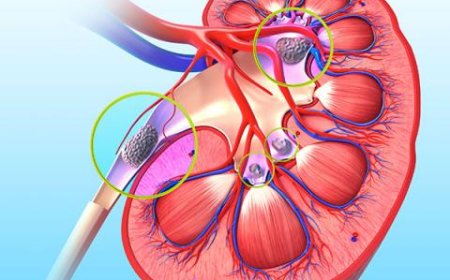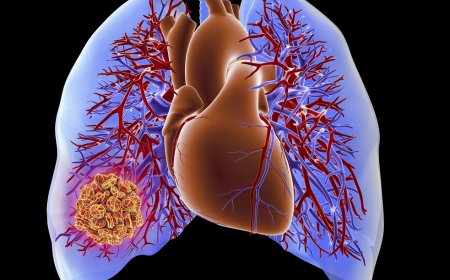How to Forage in the Bosque Wild Areas Albuquerque
How to Forage in the Bosque Wild Areas Albuquerque The Bosque, a unique riparian forest ecosystem stretching along the Rio Grande through Albuquerque, New Mexico, is more than just a scenic escape from urban life—it’s a living pantry. For decades, local residents, Indigenous communities, and nature enthusiasts have quietly gathered edible plants, medicinal herbs, and wild fungi from this narrow co
How to Forage in the Bosque Wild Areas Albuquerque
The Bosque, a unique riparian forest ecosystem stretching along the Rio Grande through Albuquerque, New Mexico, is more than just a scenic escape from urban life—it’s a living pantry. For decades, local residents, Indigenous communities, and nature enthusiasts have quietly gathered edible plants, medicinal herbs, and wild fungi from this narrow corridor of green amid the desert. Foraging in the Bosque is not merely a hobby; it’s a practice rooted in ecological awareness, cultural heritage, and sustainable living. Whether you’re seeking wild berries in late summer, nutrient-rich greens in spring, or medicinal roots in autumn, the Bosque offers a bounty—if you know where and how to look.
Unlike commercial agriculture, foraging connects you directly to the rhythms of the land. It teaches patience, observation, and respect for natural cycles. In a world increasingly disconnected from its food sources, foraging in the Bosque reestablishes that vital link. But with abundance comes responsibility. The Bosque is a fragile ecosystem under pressure from invasive species, climate change, and human foot traffic. Responsible foraging ensures that this wild resource endures for future generations.
This guide is your comprehensive, field-tested roadmap to foraging safely, legally, and ethically in the Bosque wild areas of Albuquerque. You’ll learn exactly which plants to seek, how to identify them with confidence, where to find them seasonally, and how to harvest without damaging the environment. We’ll also cover essential tools, legal boundaries, real-world examples, and answers to the most common questions. Whether you’re a beginner taking your first steps into wild food or an experienced forager refining your knowledge, this guide will deepen your understanding and elevate your practice.
Step-by-Step Guide
Step 1: Understand the Bosque Ecosystem
Before you begin foraging, you must understand the environment you’re entering. The Bosque is a narrow band of cottonwood and willow forest, flanked by the Rio Grande on one side and the arid high desert on the other. This riparian zone supports over 300 plant species, many of which are edible or medicinal. The ecosystem is shaped by seasonal flooding, groundwater levels, and temperature extremes. Cottonwoods (Populus deltoides) dominate the canopy, while understory plants like Russian olive, tamarisk, and native shrubs thrive in the moist soil.
Key microhabitats to recognize:
- Riverbank edges: Moist, sandy soils ideal for wild berries and water-loving herbs.
- Shaded understory: Where shade-tolerant plants like wild mint and plantain grow.
- Disturbed areas: Trailsides and abandoned fields where invasive species like Russian olive and dandelion flourish.
- Seasonal wetlands: Puddles and slow-moving water edges where cattails and watercress appear.
Learning these zones helps you predict where certain plants grow. For example, wild strawberries are rarely found in full sun but thrive under partial shade near the water’s edge.
Step 2: Identify Edible and Medicinal Plants by Season
Foraging success hinges on timing. The Bosque’s bounty changes with the seasons. Below is a seasonal breakdown of key forageable plants.
Spring (March–May)
Spring is the most prolific season for edible greens and early flowers.
- Chickweed (Stellaria media): A low-growing, succulent herb with tiny white flowers. Taste: mild, slightly sweet. Use: raw in salads, steamed as a green. Found in moist, shaded areas near trails.
- Dandelion (Taraxacum officinale): Often considered a weed, every part is edible. Leaves are bitter when mature; harvest young leaves before flowering. Roots can be roasted as a coffee substitute. Found everywhere—lawns, trailsides, disturbed soil.
- Wild onion and garlic (Allium spp.): Look for narrow, grass-like leaves and a strong odor when crushed. Bulbs are edible raw or cooked. Caution: Avoid look-alikes like death camas, which have no odor.
- Wild mint (Mentha arvensis): Fragrant leaves used for tea or seasoning. Grows near water or damp soil. Crush a leaf—true mint smells sharp and cool.
- Wild asparagus (Asparagus officinalis): Thin, tender stalks emerge in early spring. Look along fence lines and gravelly riverbanks. Harvest stalks under 8 inches tall.
Summer (June–August)
Summer brings fruit and flowers. Heat intensifies, so forage early morning or late afternoon.
- Wild strawberries (Fragaria virginiana): Tiny, intensely flavored berries. Grow low to the ground in patches under cottonwoods. Harvest only fully red berries—green ones are bitter.
- Prickly pear cactus (Opuntia spp.): Found on drier, sun-exposed slopes. The pads (nopales) can be peeled and cooked; the fruit (tunas) ripens in late summer. Use gloves—spines are tiny and easily missed.
- Wild grapes (Vitis arizonica): Clusters of small, tart grapes grow along trellises of vines. Taste test before harvesting—some are very sour. Use for juice, jam, or wine.
- Wild roses (Rosa woodsii): Petals are edible and high in vitamin C. Harvest fully open blooms in early summer. Use in teas or as garnish. Avoid petals from plants sprayed with chemicals.
Fall (September–November)
Fall is the season of nuts, seeds, and medicinal roots.
- Cattails (Typha domingensis): Found in shallow water. Young shoots taste like cucumber; pollen can be collected and used as flour. Rhizomes are starchy and can be boiled or roasted. Harvest only from clean water sources.
- Wild plums (Prunus americana): Small, tart fruits ripen in late August to September. Found along the edges of the Bosque. Great for jams or drying.
- Chokecherries (Prunus virginiana): Deep purple, astringent berries. Must be cooked to remove bitterness and toxins. Used in syrups, pies, and teas. Avoid seeds—contain trace cyanide.
- Yarrow (Achillea millefolium): A medicinal herb with feathery leaves and white flower clusters. Used for wound healing and tea for colds. Harvest leaves and flowers before they go to seed.
- Wild sunflower (Helianthus annuus): Tall plants with large yellow heads. Seeds are edible after roasting. Harvest when backs of heads turn brown and seeds are plump.
Winter (December–February)
Winter foraging is limited but rewarding. Focus on bark, evergreens, and stored energy in roots.
- Cottonwood buds (Populus deltoides): Sticky, resinous buds collected in late winter. Used in salves for skin healing and respiratory relief. Harvest only from healthy trees—never from those near roads or pollution.
- Pine needles (Pinus edulis, Pinus ponderosa): Found in drier areas bordering the Bosque. Rich in vitamin C. Steep in hot water for tea. Avoid needles from trees near highways.
- Wintergreen (Gaultheria procumbens): Low evergreen with glossy leaves and red berries. Leaves have a minty flavor. Use sparingly in teas. Found in shaded, moist areas.
Step 3: Learn Safe Identification Techniques
Never consume a plant unless you are 100% certain of its identity. Mistaking a toxic plant for an edible one can be fatal. Use the “Four-Point Identification Method”:
- Leaf shape and arrangement: Are leaves opposite or alternate? Are they lobed, toothed, or smooth?
- Stem and growth pattern: Is the stem square (mint family) or round? Does it ooze sap when broken?
- Flower structure and color: How many petals? Are they clustered or solitary?
- Smell and taste (cautiously): Crush a small part. Does it smell like mint, onion, or almonds? Taste a tiny piece—bitterness can indicate toxicity.
Use field guides with high-resolution photos. Cross-reference with at least two trusted sources. Never rely on a single app or memory. Some toxic look-alikes include:
- Death camas (toxic) vs. wild onion (edible): Death camas has no onion smell.
- Water hemlock (deadly) vs. wild carrot (edible): Water hemlock has purple-spotted stems and no carrot smell.
- Poison ivy (toxic) vs. Virginia creeper (non-toxic): Poison ivy has three leaflets; Virginia creeper has five.
Always carry a magnifying glass and a field guide. Take photos of plants from multiple angles before harvesting.
Step 4: Know the Legal Boundaries
Foraging in the Bosque is permitted under certain conditions, but regulations vary by location.
The Bosque spans multiple jurisdictions:
- City of Albuquerque Parks and Recreation: Allows limited foraging of non-endangered, non-protected plants for personal use. Commercial harvesting is prohibited.
- Bernalillo County Open Space: Permits foraging with a permit for educational or personal use only.
- Rio Grande National Forest (upstream): Requires a permit for any plant collection.
Key rules:
- Do not harvest protected or endangered species (e.g., New Mexico locoweed, certain cacti).
- Never dig up roots of native trees or shrubs without permission.
- Do not forage within 50 feet of the riverbank—this is a protected riparian buffer zone.
- Do not use tools that damage the soil or vegetation (e.g., shovels, weed whackers).
- Respect signage: “No Foraging” or “Protected Area” means no collection.
Always check the City of Albuquerque Parks website for current regulations. Violations can result in fines or criminal charges.
Step 5: Harvest Responsibly
Responsible harvesting ensures plant populations survive and regenerate.
- Take only what you need: Harvest no more than 10% of a plant population in one area.
- Use clean tools: Carry small scissors or pruning shears. Avoid tearing plants.
- Harvest from healthy plants: Avoid plants with mold, discoloration, or insect damage.
- Leave the root system intact: For leafy greens, pick outer leaves. For herbs, cut stems above the base.
- Replant seeds or cuttings: If you harvest seeds, scatter them nearby. If you take a stem, replant a cutting if possible.
- Do not forage near pollution sources: Avoid plants along roadsides, industrial zones, or areas sprayed with herbicides.
Remember: You are a guest in the ecosystem. Your goal is not to strip the land but to coexist with it.
Step 6: Process and Store Your Harvest
Proper handling preserves flavor and safety.
- Wash immediately: Rinse in cold water to remove dirt, insects, and pollen. Use a colander or salad spinner.
- Separate and dry: Spread greens on clean towels. Air-dry in a shaded, ventilated area. Avoid direct sun—it degrades nutrients.
- Refrigerate: Store fresh greens in sealed containers with damp paper towels. Use within 3–5 days.
- Freeze: Blanch greens (dip in boiling water for 30 seconds, then ice water), then freeze in bags. Berries can be frozen raw.
- Dry for tea: Hang herbs upside down in a dark, dry room. Store dried leaves in glass jars away from light.
- Make tinctures or oils: Infuse herbs in alcohol or oil for long-term medicinal use. Follow tested recipes.
Label all containers with plant name, date, and location. Never store wild foods in plastic bags—they trap moisture and promote mold.
Best Practices
Practice Ethical Foraging
Ethical foraging is not optional—it’s essential. The Bosque is not a supermarket. Every plant you take is part of a complex web of life. Birds eat the berries. Bees pollinate the flowers. Deer browse the leaves. Removing too much disrupts the balance.
Follow the “Leave No Trace” principles adapted for foraging:
- Plan ahead: Know what you’re looking for and where.
- Travel on durable surfaces: Stick to trails and avoid trampling fragile plants.
- Dispose of waste properly: Pack out all trash, including plant scraps.
- Minimize fire impact: Never build fires in the Bosque without permission.
- Respect wildlife: Observe from a distance. Do not feed animals.
- Be considerate of others: Forage quietly. Avoid loud conversations or music.
Also, honor Indigenous knowledge. Many of the plants you forage have been used by Pueblo, Navajo, and Apache communities for centuries. Acknowledge their stewardship. Learn from their traditions without appropriating them.
Forage with a Partner
Never forage alone in remote areas of the Bosque. Even if you’re familiar with the terrain, conditions can change rapidly. A partner can help with identification, provide first aid, or call for help if needed. Bring a fully charged phone, water, and a basic first-aid kit.
Avoid Contaminated Areas
The Bosque is not immune to pollution. Avoid foraging near:
- Highways (vehicle exhaust and tire runoff)
- Former industrial sites
- Areas with visible pesticide spray residue
- Places where dogs frequently urinate
- Downstream from sewage outflows
Soil and water contamination can concentrate heavy metals or toxins in plants. When in doubt, skip it.
Start Small, Learn Slowly
Don’t try to identify and harvest 20 plants in your first outing. Focus on 2–3 common, easily identifiable species. Master those before moving on. Keep a journal: record where you found each plant, the date, weather, and how you used it. Over time, this becomes your personal foraging atlas.
Teach Others Responsibly
If you guide others, emphasize safety and ethics. Never share locations of rare or sensitive plants. Encourage curiosity over consumption. The goal is not to stockpile wild food but to cultivate a relationship with the land.
Tools and Resources
Essential Gear
Minimal tools are needed, but the right ones make foraging safer and more efficient.
- Reusable cloth bags or baskets: Allow airflow, prevent crushing.
- Small scissors or pruning shears: For clean cuts without tearing.
- Field guide: Recommended: “Edible and Medicinal Plants of the Southwest” by Charles Kane or “The Forager’s Harvest” by Samuel Thayer.
- Magnifying glass: For examining tiny flower structures.
- Smartphone with offline apps: iNaturalist (for plant ID), Seek by iNaturalist (image recognition), or Wild Edibles (downloadable guides).
- Water and snacks: Stay hydrated and energized.
- First-aid kit: Include antiseptic wipes, bandages, and tweezers for splinters.
- Map or GPS: The Bosque is vast. Know your location. Use Google Maps offline mode.
- Hand sanitizer and gloves: For cleaning hands after handling unknown plants.
Recommended Books
- “Edible and Medicinal Plants of the Southwest” by Charles Kane: The most comprehensive guide for New Mexico. Includes photos, habitat info, and preparation methods.
- “The Forager’s Harvest” by Samuel Thayer: A masterclass in ethical harvesting and plant identification. Highly detailed and scientifically accurate.
- “Wild Edible Plants of New Mexico” by Gary Paul Nabhan: Focuses on desert and riparian species with cultural context.
- “Botany in a Day” by Thomas J. Elpel: Teaches plant families—key to rapid identification.
Online and Local Resources
- iNaturalist.org: Upload photos of plants to get community ID help. Use the app in the field.
- University of New Mexico Herbarium: Offers free plant identification services via email. Visit their website for digital resources.
- Albuquerque Botanical Garden: Hosts seasonal foraging workshops. Check their calendar.
- Native American Community Academy: Offers cultural education on traditional plant use.
- Friends of the Bosque: A nonprofit dedicated to Bosque conservation. They offer guided walks and volunteer opportunities.
Mobile Apps
- iNaturalist: AI-assisted plant ID with expert verification.
- Seek by iNaturalist: No login required. Great for beginners.
- PlantSnap: Fast image recognition. Less accurate for similar-looking species.
- Wild Edibles (iOS/Android): Offline database of edible plants by region.
Always cross-reference app IDs with a physical field guide. Apps can misidentify toxic plants as edible.
Real Examples
Example 1: A Spring Morning Harvest
María, a lifelong Albuquerque resident, wakes before dawn in April. She packs her cloth bag, scissors, and Kane’s field guide. She heads to the Bosque near the Rio Grande Nature Center. Her goal: chickweed and wild onion.
At 6:30 a.m., the air is cool and dew-covered. She walks the trail near the old irrigation ditch, where the soil is moist. She spots a patch of chickweed—low, glossy, with tiny white flowers. She confirms it with the guide: opposite leaves, no milky sap. She harvests a small handful, leaving 90% of the patch intact.
Further along, she finds wild onion. She crushes a leaf—strong garlic scent. She digs gently with her fingers, taking only the bulbs she needs. She replants the roots nearby. Back home, she rinses the greens, sautés them with garlic and olive oil, and serves them with eggs. The flavor is earthy, fresh, and unmistakably wild.
Example 2: Autumn Medicinal Gathering
David, a retired nurse, visits the Bosque in October to harvest yarrow and cottonwood buds. He’s been making salves for arthritis since his wife passed. He knows the yarrow grows near the trailhead at the end of Coors Boulevard.
He finds a healthy patch of yarrow—white flower heads, feathery leaves. He cuts the flowering tops with scissors, placing them in a paper bag. He avoids plants near the road. Later, he dries them in his attic.
For cottonwood buds, he walks upstream to a quieter stretch. He finds a healthy tree with sticky, resinous buds. He uses gloves to gently pluck them. He avoids cutting branches. He stores them in a glass jar with olive oil and lets them infuse for six weeks. The resulting salve soothes his joints and smells like pine and forest.
Example 3: A Family Foraging Day
The Gonzales family—parents and two children—spend Sunday afternoons foraging in the Bosque. Their rule: one plant per person per visit. This year, they focused on wild strawberries.
The kids learn to spot the tiny red fruits under the leaves. They learn not to pull up the plants. They taste one berry before picking more. They bring home a pint, make jam, and label the jars with the date and location: “Bosque, June 12, 2024.”
On the way home, they discuss what they saw: a red-tailed hawk, a beetle, a patch of mushrooms. The foraging trip becomes a lesson in ecology, patience, and gratitude.
FAQs
Is it legal to forage in the Bosque?
Yes, for personal, non-commercial use of common, non-protected plants. Always check current regulations with the City of Albuquerque Parks Department. Commercial harvesting, digging up roots, or collecting protected species is illegal.
What should I do if I’m unsure if a plant is safe?
Do not eat it. Take a photo and consult a field guide or expert. Use iNaturalist to get community input. When in doubt, leave it.
Can I forage in the Bosque year-round?
Yes, but availability varies. Spring and fall are most productive. Winter offers limited options like pine needles and cottonwood buds. Always respect seasonal closures or protected zones.
Are there any dangerous plants I should avoid?
Yes. Avoid poison ivy, water hemlock, death camas, and any plant with milky sap unless positively identified as safe. Also avoid plants with almond-like smells—they may contain cyanide compounds.
Can I forage with my dog?
Yes, but keep your dog on a leash. Many wild plants are toxic to dogs, including wild onions and certain mushrooms. Also, dogs can damage vegetation and disturb wildlife.
Do I need a permit to forage?
No permit is required for personal use of common plants in most city-managed Bosque areas. However, permits are required in county open spaces or federal lands. Always verify before harvesting.
How do I know if a plant has been sprayed with chemicals?
Look for signs: unnatural green color, dead patches nearby, or residue on leaves. Avoid plants near roads, golf courses, or public parks that are regularly maintained. When in doubt, skip it.
Can I sell the plants I forage?
No. Commercial foraging is prohibited in the Bosque. Selling wild-harvested plants without a license is illegal and undermines conservation efforts.
What’s the best time of day to forage?
Early morning or late afternoon. The light is better for identification, temperatures are cooler, and plants are most hydrated. Avoid midday heat, especially in summer.
How do I store wild plants for long-term use?
Dry herbs in a dark, airy place. Freeze berries and greens. Make tinctures with alcohol or infused oils. Store everything in glass jars away from sunlight and moisture.
Conclusion
Foraging in the Bosque wild areas of Albuquerque is not just about gathering food—it’s about reconnecting with the land, honoring ancestral knowledge, and practicing deep ecological stewardship. The cottonwoods, the wild strawberries, the yarrow, and the cattails are not mere resources. They are living threads in a delicate web that sustains birds, insects, soil, and ultimately, us.
This guide has equipped you with the knowledge to forage safely, legally, and ethically. You now understand the seasons, the plants, the tools, and the responsibilities that come with gathering from nature’s pantry. But knowledge alone is not enough. True foraging begins when you step onto the trail with humility, curiosity, and reverence.
As you return to the Bosque season after season, you’ll notice subtle changes—the early bloom of a wild rose, the quiet return of a bird species, the resilience of a plant after a flood. These are the quiet rewards of foraging: not the harvest itself, but the relationship you build with the land.
Forage wisely. Leave no trace. Share your knowledge gently. And above all, remember: the Bosque does not belong to you. You belong to the Bosque.






























